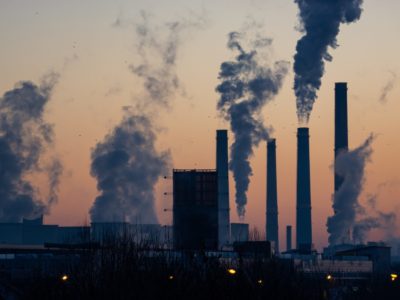During the final round of the presidential election, dated 8 November 2016, Mr. Trump was challenging through explosive words Mrs. Clinton and with the worldwide spotlight and anxiety, the Democratic Party’s nominee was defeated by Republican Party’s candidate, who was inaugurated as 45th President of the United States of America.
It has been a year since one of the most powerful businessmen of America and television personality, Donald Trump, took the office of President; a year of changes, tweets, walls, economic growth and demonstrations.
Described often as a populist authoritarian, an immigration hawk and a hardcore conservative, some argue – blending resignation and concern – that the world has completely transformed since he came into power, especially in terms of US relations with the neighbours and the rest of the world. His quite often contradictory personality has attracted a flood of criticism due to his controversial philosophies, his racial statements and hilarious tweets, so much to be ridiculed and performed as a cartoon character.
Although little more than 12 months are not enough to provide a thorough analysis of the repercussions of Trump’s policies in the future times, the amount of data since now collected concerning the most relevant reforms and moves advocated allows the public to draw own conclusions.
Trump’s First Year: Domestic Policy
After having nourished the uncertainties and inaccuracies on the Patient Protection and Affordable Care Act during the presidential campaign, as early as January, Donald Trump signed his first executive order aimed at starting the eradication process of the Obamacare, one of the most imperative reforms of the previous President, which provided to additional tens of millions of Americans the medical insurance. Nevertheless, the repeal and replacement proposals failed to gather the approval of the Congress.
The Tax Cuts and Jobs Act is one of the most significant reforms signed in the present mandate, which incorporates drastic tax cuts for higher-incomes. Whereas according to many economists this type of measures will lead to an increment of inequality in the long-term, the Tax Cuts and Jobs Act pursues the classical belief of the America’s right wing: reducing tax rates to corporations and rich individuals would drive undeniably to economic growth and would advantage every social layer.
Although the job creation has not recorded substantial differences from the Obama Era, the unemployment rate fell to 4,1%, the lowest level since December 2000. In addition, in accordance with the “three percent GDP growth” as the title of the Trump Administration goal for the economy, data estimates that the GDP growth achieved approximately 2,5% at the end of 2017.
Trump’s First Year: Foreign Policy
The slogan American First, the essence of the electoral campaign, plainly reflects on the foreign policy. Let’s first frankly admit that Trump’s universe is not a place of welcoming deals and multilateral cooperation. His first year can be summarized by the word withdrawal, withdrawal from many-sided agreements to pursue a politics based on bilateral accords and trade deals aimed at guaranteeing America First.
In the commercial sector, Donald Trump inaugurated his presidency by reshaping the trade policies and endorsing an executive order to withdraw the US from the Trans-Pacific Partnership, commonly known as TTP, a trade agreement designed for reducing the trade tariffs between the signatories involving countries like Japan, Mexico, New Zeeland, Canada, Singapore. Raising the flag of nationalism and jeopardizing the cohesion with the Pacific region, the deal was threatening the American manufacturing.
In the environment sector, despite the harsh opposition of the worldwide leaders, on June 1st President Trump fulfilled the promise to withdraw the US from the Paris climate accord, which however will enter into force not before November 2020. According to Trump and his revealed scepticism about the hoax of global warming, the Paris agreement that gathers almost the entire world in the fight against the climate change is unfair and represents a punishment to the US, bringing only damages to the economy of the country. An umpteenth attempt of isolationism, nationalism and obstacle to the warnings affecting our planet.
Albeit calls to mitigate his policies and attitude, President Trump attached another priority to the political agenda: revising the immigration policies. Indeed, already in January, the Administration moved the first steps toward the construction and expansion of the wall on the southern border with Mexico, reimbursed by the latter, and furthermore toward the acceleration of the deportation process. The immigration reforms implemented serve to dismantle the illegal immigration system and to lay out new criteria for specific categories of undocumented immigrants, safeguarded during the Obama Administration, who have become the first targets for deportation, labelled without excitation and evidence as criminals. Even the ban for ensuring the country and preventing possible extremism was issued in early 2017, as clarified in the Executive Order Protecting the Nation from Foreign Terrorist Entry into the United States: “In order to protect Americans, the United States must ensure that those admitted to this country do not bear hostile attitudes toward it and its founding principles”. Iran, Syria, Iraq and Libya are only some of the countries involved in these new measures. Paradoxically, the domestic terrorism that occurred in October on the Las Vegas strip killing 59 people and injuring more than 520 did not provoke substantial changes in the national gun regulation.
Moving toward the Middle East region, the Iranian nuclear deal achieved by President Obama and unanimously approved by the UN Security Council in 2015 has been endangered by the imposition of tougher sanctions and by the incessant accusations and objections made by Trump of violations by Teheran of the clauses in the agreement. These measures have been strongly bolstered by the Israeli Prime Minister Benjamin Netanyahu. The complicity between the two allies has been overtly declared in the last weeks of 2017, when the American President promised to officially recognize Jerusalem as capital of Israel and to move there the US embassy from Tel Aviv, “it is something that has to be done”, asserted in a speech. Despite the stress to not interfere in the boundaries issue of the two-states, the big announcement triggered widespread demonstrations since it could undermine the implemented peace process and exacerbate the already enduring religious war that again would traumatize the entire region.
What’s next Mr. Trump?









